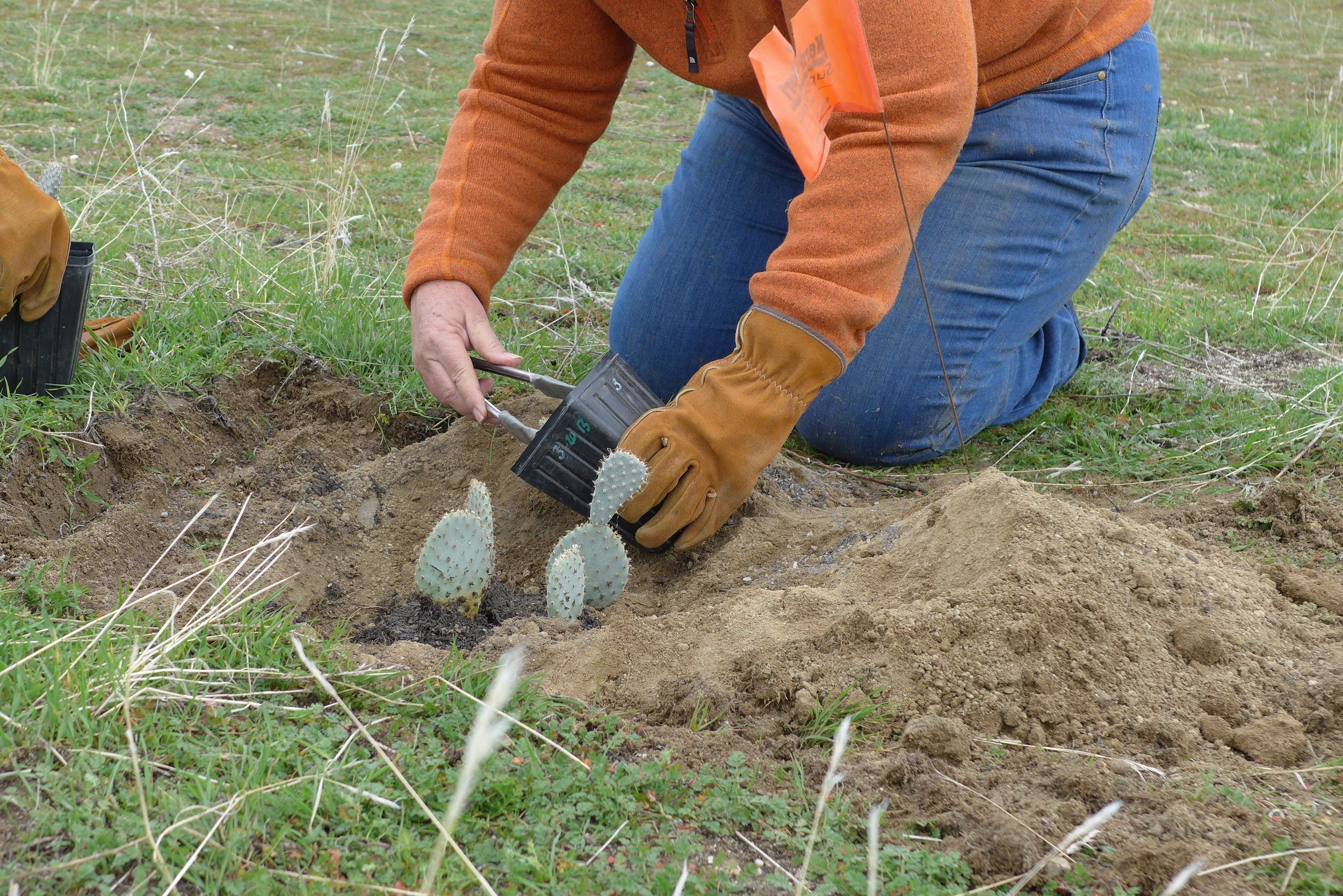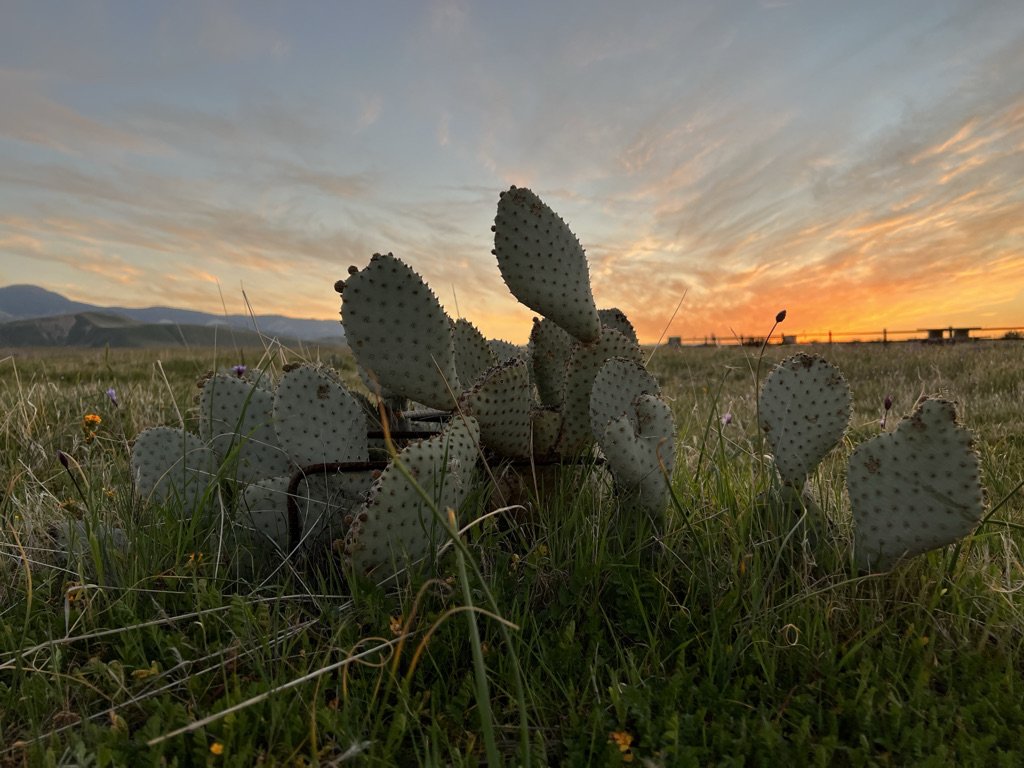Bakersfield Cactus Thrives at Wind Wolves Preserve
Melissa Dabulamanzi
Preserve Manager
If you’ve explored the Wildflower Loop or the beginning of the San Emigdio Canyon Trail, you may have noticed clusters of a small cactus in the beaver tail family. These clusters have a rebar stake as a marker with an ID number tag attached, and sometimes rebar cages or other wire protection surrounding the pads. What looks like a modest handful of cactus plants to the casual hiker is, in fact, one of our proudest and most successful restoration projects on The Wildlands Conservancy’s Wind Wolves Preserve - the restoration of over 8,000 endangered Bakersfield cactus pads to the sandy, alluvial soils of the San Joaquin Valley floor.
Bakersfield cactus (Opuntia basilaris var. treleasii) is endemic (or native) to the southeastern corner of the San Joaquin Valley. Primarily due to habitat loss, this small cactus species was federally and state-listed as endangered in 1990. Wind Wolves Preserve is home to one of the largest extant Bakersfield cactus populations, which unfortunately experienced damage from a lightning-caused wildfire in September of 2011. This fire, igniting the annual invasive grasses that encroach on the cactus, was the driving force behind The Wildlands Conservancy acquiring a Research and Management Permit through the California Department of Fish and Wildlife to collect and propagate pads from the extant population (what we call the historic population) to not only increase that population, but establish four new populations across the valley floor of Wind Wolves Preserve.
Each December, the Preserve staff have a holiday tradition to collect over 1,000 secondary pads from the historic population with the help of community volunteers. After allowing a couple of weeks for the pads to scab over at the scar site from collection day, staff and volunteers then begin planting the pads in clusters of seven across the five populations established at Wind Wolves Preserve. Some clusters have grown from the seven original pads to over thirty, which can get quite difficult to count as secondary, tertiary, and quaternary pads all grow and intertwine together from the original primary pads planted in the ground.
Yearly monitoring is performed each summer to track the overall health of the cactus populations, and new clusters are planted each rainy season, making this restoration project a growing endeavor. The next time you visit our trails, keep an eye out for this special and resilient little cactus, and watch for those volunteer days in December and January that are cactus-focused!




